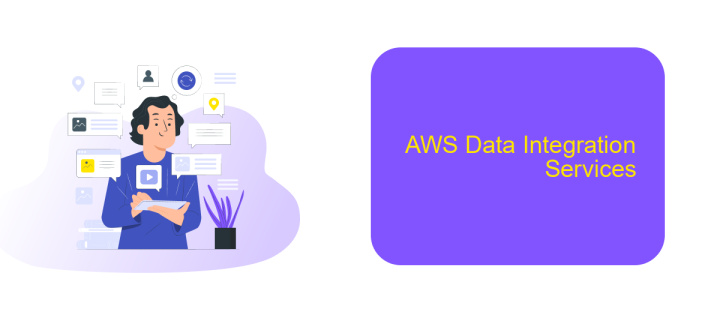Data Integration AWS
Data integration on AWS (Amazon Web Services) is a powerful approach to managing and unifying data from various sources into a single, coherent view. Leveraging AWS's robust suite of tools and services, organizations can streamline data workflows, enhance data quality, and drive more informed decision-making. This article explores key strategies and best practices for effective data integration on AWS.
Introduction
Data integration is a crucial aspect for businesses looking to streamline their operations and enhance decision-making capabilities. Leveraging AWS (Amazon Web Services) for data integration offers a range of tools and services that facilitate seamless data flow across various platforms and applications.
- Scalability: AWS provides scalable solutions to handle data from multiple sources.
- Security: Robust security measures ensure data integrity and privacy.
- Flexibility: AWS supports various data formats and integration methods.
- Cost-Effectiveness: Pay-as-you-go pricing models help manage costs efficiently.
One of the services that can significantly aid in setting up integrations is ApiX-Drive. This platform allows for easy connection and automation between different applications without requiring extensive technical knowledge. By integrating ApiX-Drive with AWS, businesses can automate workflows, reduce manual efforts, and achieve real-time data synchronization, thereby enhancing overall productivity and operational efficiency.
Benefits of Data Integration

Integrating data within AWS offers numerous benefits, enhancing the overall efficiency and effectiveness of business operations. One of the primary advantages is the ability to centralize data from various sources into a single repository, allowing for improved data accessibility and management. This centralization facilitates real-time data analysis, enabling businesses to make informed decisions quickly. Additionally, AWS provides robust security measures, ensuring that integrated data remains protected against unauthorized access and breaches.
Another significant benefit is the seamless integration capabilities provided by AWS, which can be further enhanced using tools like ApiX-Drive. ApiX-Drive simplifies the process of connecting various applications and services, automating data flows without requiring extensive coding knowledge. This not only reduces the time and effort needed for manual data handling but also minimizes the risk of errors. Furthermore, the scalability of AWS ensures that as your data needs grow, the infrastructure can easily adapt, providing consistent performance and reliability.
Challenges of Data Integration

Data integration on AWS presents several challenges that organizations must address to ensure seamless operations. One of the primary issues is data consistency, as data from multiple sources can have different formats and structures, making it difficult to maintain a unified view.
- Data Security: Ensuring that data is securely transferred and stored is crucial, especially when dealing with sensitive information.
- Scalability: Managing large volumes of data can be complex, requiring robust infrastructure to handle growth efficiently.
- Data Transformation: Converting data into a consistent format often requires significant effort and sophisticated tools.
- Real-time Integration: Achieving real-time data integration can be challenging due to latency and synchronization issues.
To overcome these challenges, leveraging tools like ApiX-Drive can be beneficial. ApiX-Drive offers seamless integration capabilities, allowing for automated data transfers and transformations across various platforms. By utilizing such services, organizations can streamline their data integration processes on AWS, ensuring data consistency, security, and real-time availability.
AWS Data Integration Services

Amazon Web Services (AWS) offers a comprehensive suite of data integration services that enable businesses to seamlessly connect disparate data sources. These services are designed to simplify the process of data migration, transformation, and synchronization, making it easier to derive actionable insights from your data.
One of the key services is AWS Glue, a fully managed ETL (extract, transform, load) service that automates the process of preparing data for analytics. AWS Glue supports a wide range of data sources and formats, making it a versatile tool for data integration tasks. Additionally, AWS Data Pipeline allows for the orchestration of complex data workflows, ensuring data is consistently processed and transferred between various AWS services and on-premises data sources.
- AWS Glue: Automates data preparation and ETL processes.
- AWS Data Pipeline: Orchestrates data workflows and transfers.
- Amazon Kinesis: Real-time data streaming and analytics.
- Amazon Redshift: Data warehousing and analytics at scale.
For businesses looking to integrate data from a variety of sources with minimal effort, third-party tools like ApiX-Drive offer additional capabilities. ApiX-Drive simplifies the integration process by providing pre-built connectors for popular applications and services, allowing for quick and efficient data synchronization without the need for extensive coding or technical expertise.


Best Practices for Data Integration
When integrating data on AWS, it is essential to follow best practices to ensure seamless and efficient data flow. Begin by clearly defining your data integration objectives and requirements. Utilize AWS services such as AWS Glue for data cataloging and ETL (Extract, Transform, Load) processes, and AWS Lambda for serverless data processing. Ensure that your data is securely transferred and stored by leveraging AWS Identity and Access Management (IAM) for access control and AWS Key Management Service (KMS) for encryption. Regularly monitor and audit your data integration processes using AWS CloudTrail and AWS CloudWatch.
For more streamlined integrations, consider using third-party tools like ApiX-Drive, which can facilitate automated data transfers between various platforms and AWS services. ApiX-Drive supports a wide range of applications and can help reduce manual intervention, allowing for more efficient data synchronization. Additionally, always validate and cleanse your data before integration to maintain data quality. Implement robust error handling and retry mechanisms to address any data transfer failures. By following these best practices, you can optimize your data integration workflows on AWS, ensuring reliability and scalability.
FAQ
What is Data Integration in AWS?
How can I automate data integration processes in AWS?
What are the common challenges in data integration?
How do I ensure data quality during integration?
Can I integrate third-party applications with AWS for data integration?
Apix-Drive is a universal tool that will quickly streamline any workflow, freeing you from routine and possible financial losses. Try ApiX-Drive in action and see how useful it is for you personally. In the meantime, when you are setting up connections between systems, think about where you are investing your free time, because now you will have much more of it.

